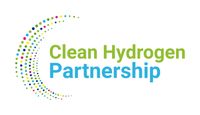Partner’s Role
Commissariat à l’Energie Atomique et aux Energies Alternatives (CEA)
CEA/LITEN coordinates the project and leads the technical WP1 and WP2. His main technical contributions are on the characterization of the CCL structure (3D images of CCL with ionomer, catalyst and carbon), measurement of component properties (H+ and O2 transfers in ionomer), operando diagnostics (liquid water by SAS), identification of transport issues (differential cell), two-phase modelling at CCL scale, and local modelling at sub-micrometer scale.
Deutsches Zentrum für Luft- und Raumfahrt e.V. (DLR)
The goal of DLR is the understanding performance limitations of PEMFC MEA at ultra-low Pt loading (<0.1 mg/cm2) and ultra-thin MEA components by means of modeling and experimental techniques in order to propose mitigation approaches for performance limitations. DLR work in this project includes: Determination of O2 transport resistance of MEAs by limiting current & EIS; Determination of proton transport resistance by limiting current (H2 Pump) & EIS; Study of impact of CL parameters on MEA performance using differential cell; Full parameter study using MEAs with difference Pt:C ratio, ionomer content, different types of ionomers, Pt-loading; Lattice Boltzmann simulations on agglomerate scale to investigate transport limitations (oxygen transport through ionomer film, primary and secondary pores); Multi-scale modeling of the single cell to link lower scale mechanisms with cell performance.
Imperial College of Science Technology and Medicine (ICL)
The work which will be done in this project will allow the PI at Imperial (ARK) to better understand the balances of flows of materials and electrocatalysis needed to produce higher efficiency fuel cells and electrolysers. These will allow (a) production of high quality publications; (b) training of students; (c) development of new ideas and approaches to produce efficient and long lasting electrochemical power sources. ARK has over 20 years’ experience in studying electrochemical energy systems including PEMFCs. He leads work on PEMFCs in the UK EPSRC H2FC SUPERGEN Hub (National fuel cell and hydrogen hub). He has been active in the field of fuel cells, including the development of new catalysts, fundamentals of electrocatalysis and PEMFC operation; new approaches to test fuel cell catalysts; and advanced methods to test PEMFCs. He has published over 140 papers and he holds 10 patents. He is founder and co-director of three companies spinning out his research. ARK has developed a range of techniques which will be central to understanding the performance of catalysts in fuel cell electrodes.
Toyota Motor Europe NV (TME)
Toyota believes that the future of fuel cell electric vehicles will depend on the acceptance of the customer which we can support with our high efficient fuel cell stack technology providing long driving range, at utmost safety, reliability and affordable price. The solid-polymer electrolyte fuel cell stack of the Mirai was developed in-house by Toyota achieving a power density of 3.1 kW per litre or 2.0 kW per kilogram with no humidifier and more than 10 year durability. Toyota has already established a production line with an automated cell assembly process to respond to fuel cell market requests.
Toyota’s expectation within this project is to better understand the mechanism related to mass transfer and to be able to propose solutions to improve output performance and decrease the cost of the system.
Toyota’s main contribution to the project will be to supply raw materials and Membrane Electrode Assembly (MEA) for characterizations by consortium partner. With more than 14 years of research, Advanced Material Research group will provide its solid scientific background to automotive fuel cell Membrane-Electrode-Assembly requirements and manufacturing.
Institut National Polytechnique de Toulouse (INPT)
Our team develops fundamental research on transport phenomena in porous media. In this context, PEMFCs are particular rich in interesting and important questions. Thus we are first interested in this project for developing new research with publications in high impact factor journals. The fact that the project aims at addressing fundamental issues in the modelling of PEMFC is of considerable interest. In the present state of the art, we are convinced that basic research on fuel cells is highly necessary. The advances we expect in the project will be useful for PEMFC and the PEMFC design at the cell scale but also in other applications involving heat and mass transfers with phase change in thin porous media. We have been working on the modelling of PEMFCs for about 15 years. Based on our experience in the field, we find this project particularly timely to perform major and decisive advances.
We will work in WP4 on two main aspects of the modelling and simulations: i) the development of pore network models of the CCL with coupling with the adjacent layers (membrane, MPL, GDL) with an emphasis on the water transfer, ii) the continuum modelling at the cell scale using a rigorous upscaling technique (volume averaging). The lead scientist (MP) for INPT in this project is internationally known for his work on pore network modelling and on transport phenomena in porous media in general. He has co-authored more than 140 publications in scientific high impact journals, including 17 directly PEMFC related publications (JPS, IJHE, PRE, IJHMT, ..) and supervised or co-supervised 8 Ph.D thesis on PEMFC. He has been involved in 4 European projects on PEMFC (see below). The second scientist (MQ) involved in the project for INPT is internationally known for his work on upscaling techniques applied to transport problem in porous media. He is one of the best specialists of the volume averaging technique. He has co-authored about 200 publications in high impact factor journals, using in most of them the volume averaging technique.
Université Montpellier (IEM)
For about a decade now, the activity of our research group is mostly devoted to the development of in situ and operando techniques coupling electrochemical and vibrational spectroscopy measurements (both infrared and Raman) intended to improve the current understanding of the charge/mass transport mechanisms behind the operation of materials for the electrochemical energy storage and production. Particularly, our group has published the first µ-Raman measurements of the membrane inner water gradient in the working H2/O2 FC (2011). Our actual work represents the state-of-art of operando µ-Raman applied to the PEMFC investigation and our group can be considered international leader in the field. This project will be the opportunity to extend our skills and understanding from the electrolyte membrane to the electrodes of the FC. Our main contribution will be to develop a new, innovative operando technique, by Raman thermography, for the measurement of the local temperature of the different component of the FC MEA at the micrometer scale (WP3).
Paul Scherrer Institut (PSI)
The identification and mitigation of mass transport losses occurring in fuel cell catalyst layers is a critical issue to reach high power densities with low precious metal loadings. The pulsed gas analysis method developed at PSI and regularly used by the researchers in P. Boillat’s group for the analysis of mass transport losses, in combination with high-resolution neutron imaging, will give a unique insight into these limitations. The neutron radiography of various MEAs will be performed with the multi-cell setup.
Hochschule Esslingen (UES)
The UAES developed AFM based techniques to further understand the properties and distribution of ionomer and catalyst particles in the catalyst layer. In the last decade UAES was doing research aimed at fuel cell and electrolyser materials. The UAES wants to continue this path and further improve the already established techniques. We expect to deliver an even more detailed analysis of fuel cell membranes and catalyst layers including electronic and ionic current, O2 diffusion and reactivity at the catalyst at nm scale as well as thermal conductivity measurements. The expected benefits will be publishing in high ranked journals with novel insights in new generation MEAs to gain visibility of our research. In addition, the outcome of the project may be used to teach students more detailed information about fuel cells in our laboratories and lessons. The contribution of the UES will be unique techniques to provide inside in the ionomer properties in real electrodes and model electrodes.
The Chemours Company (CC)
In this project, a membrane with ohmic resistance of 20 mOhm-cm² will be targeted, with operation at 120°C and durability of 20,000 cycles. These goals will be accomplished by minimizing membrane thickness, utilizing low EW electrolyte, and custom designing radical scavengers with high activity/reduced mobility to prevent free radical degradation of membrane backbone/side chain. Chemours will investigate novel structures for extremely low EW and/or high oxygen permeability, which will have applications in either the membrane or catalyst layer ionomer. Chemours has been developing Nafion™ ionomers and membranes since the 1960s and has diverse experience in monomer synthesis, polymerization, and characterization of materials.
The University of Calgary (UCA)
UCA has a leading expertise and ongoing research in characterization of ionomer films and catalyst layer properties. A primary focus of my research is quantification of transport, hydration, and thermal properties of ionomer thin films. The catalyst layer of polymer electrolyte fuel cells comprises of 3-10 nm of ionomer film coating aggregates of platinized carbon particles. Our groups is amongst the 2-3 groups in the world that has reported proton conduction of few nanometers thin ionomer films.











